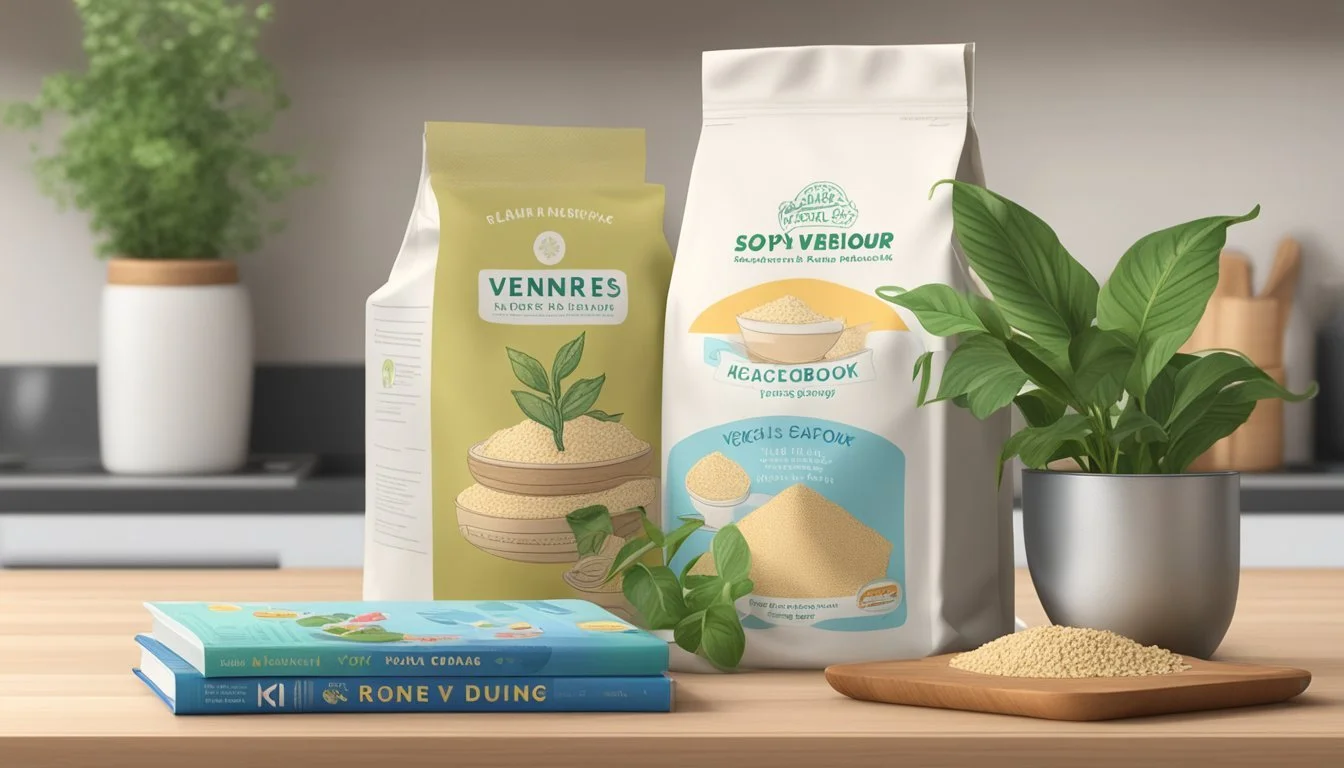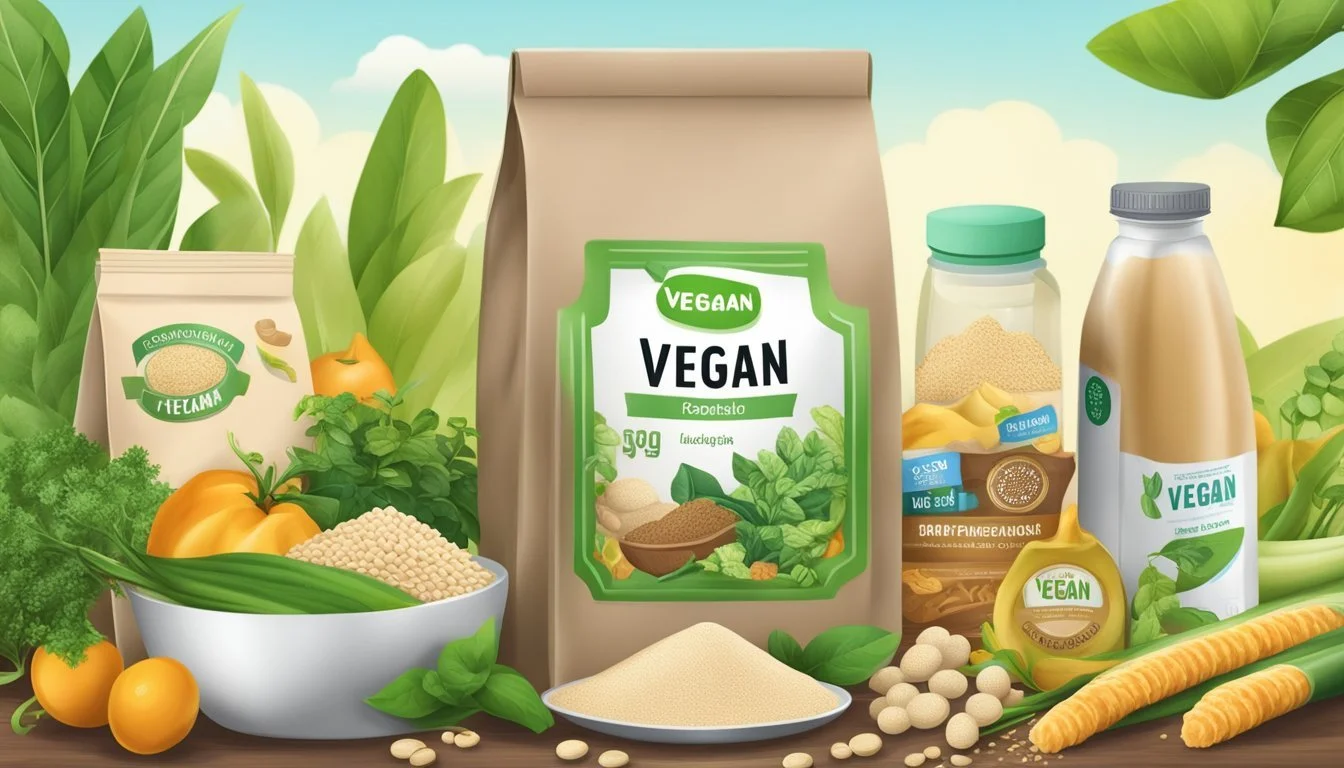Is Soy Flour Vegan?
Unveiling the Truth About This Plant-Based Ingredient
Soy flour is a product that caters well to vegan diets, which exclude all forms of animal exploitation and cruelty as much as possible, particularly in the form of food. Derived from ground soybeans, soy flour is inherently plant-based and thus aligns with vegan principles. It serves as a versatile ingredient in many culinary applications, from baking to thickening sauces, and is appreciated for its high protein content which is often sought after in vegan diets.
Manufacturers produce soy flour using raw soybeans, typically by removing the oil, and then grinding the beans into a fine powder. This process ensures that the flour remains free from animal products, and since it comes directly from soybeans—a legume—it is inherently vegan. The fact that soy flour also happens to be gluten-free makes it an attractive option for those with gluten sensitivities or celiac disease, expanding its appeal beyond just the vegan community.
As the prevalence of plant-based diets continues to rise, the versatility and nutritional benefits of soy flour have become increasingly recognized. It provides a source of complete protein, containing all nine essential amino acids, which is particularly beneficial for vegans who must obtain these amino acids through various plant-based foods. Rich in fiber, vitamins, and minerals, soy flour is not just vegan but also a nutritious choice for anyone looking to incorporate more plant-based ingredients into their diet.
Understanding Soy Flour
Soy flour is a product of milling soybeans into a fine powder, rich in protein and other nutrients. It serves versatility in cooking and baking, providing a plant-based protein source for various recipes.
Origin and Production
Soy flour originates from soybeans, a species of legume native to East Asia. The production process involves cleaning, dehulling, and then milling the beans into a fine, powdery substance. During the milling process, the oil may be retained for full-fat versions or removed to produce defatted soy flour, which has a lower fat content but maintains a high protein level.
Nutritional Profile
The nutritional content of soy flour is impressive, offering a rich array of nutrients. It is particularly noted for its protein content, containing all essential amino acids required by the human body. Soy flour is also a good source of fiber, iron, and calcium. Here's a brief overview of its nutritional composition:
Protein: High-quality plant-based protein
Fiber: Soluble and insoluble fiber for digestive health
Vitamins: Contains B vitamins
Minerals: Rich in iron and calcium
Culinary Uses
Soy flour is a versatile ingredient in the culinary world, employed across various applications. In baking, it's often used to make bread, cakes, and other baked goods, adding a protein boost and creating a moist texture. Additionally, soy flour can thicken sauces, smoothies, and gravy, making it a staple for plant-based cooking. Its ability to enrich foods with protein and nutrients while offering a pleasant taste and texture makes it a valuable addition to many recipes.
Soy Flour in a Vegan Diet
Soy flour plays a significant role in vegan baking and cooking, offering a high-protein alternative to traditional flours. Its use in a vegan diet is valued for both its versatility in recipes and its potential health benefits.
Vegan Baking and Cooking
Soy flour is a staple in vegan cuisine, acting as a nutrient-dense ingredient for those following a plant-based diet. It is a crucial component for creating dairy-free and egg-free baked goods. Known for its higher protein content compared to wheat flour, soy flour can enhance the nutritional profile of vegan recipes. Here are some specific ways in which soy flour can be incorporated into vegan baking and cooking:
Bread: It can replace up to 25% of wheat flour in recipes to increase protein without compromising texture.
Muffins and Pancakes: Soy flour adds a moist quality, making these items tender and rich in flavor.
Cookies: A small amount of soy flour can be used to make cookies chewier and more satisfying in terms of protein intake.
Health Benefits and Risks
Soy flour, derived from ground soybeans, contributes positively to heart health by potentially lowering cholesterol levels. It's a plant-based ingredient that contains no animal products, fitting perfectly within a vegan nutritional approach. Here's a brief overview of the health benefits and risks linked to soy flour:
Cancer: Consuming whole soy foods might lower the risk of breast cancer and other types of cancer.
Inflammation: Soy's anti-inflammatory properties can be beneficial for reducing chronic inflammation.
Bone Health: A diet including soy flour may support bone health, which is especially important in a vegan diet that does not include dairy.
Heart Disease: Incorporation of soy products in a diet has been associated with a lower risk of heart disease.
While the consumption of soy flour offers numerous health benefits, individuals should consume it as a part of a varied and balanced vegan diet to avoid potential risks associated with high soy intake. It is always recommended to consult health professionals for personalized nutritional advice.
Comparing Different Flours
When selecting a flour for cooking and baking, it is crucial to consider whether a flour is gluten-free or plant-based, as well as how its nutritional content and cooking properties compare to traditional flours.
Gluten-Free Options
Gluten-free flours cater to those with celiac disease or gluten sensitivity, and there are many flours that naturally lack gluten. Rice flour, both white and brown, is widely used for its neutral flavor and because it is easily digestible. Almond flour is another popular choice known for its nutritional benefits, including protein and healthy fats. Coconut flour, high in fiber and low in carbohydrates, is a staple in many gluten-free diets. Oat flour is valued for its taste and versatility, though it's essential to ensure the oats are processed in a gluten-free facility. Quinoa flour is also gluten-free and packs a complete protein profile, which is quite rare for plant-based foods. Chickpea flour is made from ground chickpeas and is not only free from gluten but also high in protein and fiber.
Traditional vs. Plant-Based Flours
Traditional flours such as all-purpose flour, whole wheat flour, and white flour are derived from wheat grains and contain gluten, which provides elasticity and strength in baking. These are often used in a wide range of recipes. On the other side, plant-based flours come from a variety of sources including grains, legumes, nuts, and seeds. Legume-based flours, like chickpea flour, offer the benefit of increased protein and fiber and are entirely vegan. Nut flours, such as almond flour, are great low-carb alternatives with healthy fats, suitable for those following a vegetarian or vegan diet. Seed flours can be made from seeds like sunflower or flaxseeds, and are another nutritious gluten-free and vegan option. The choice between traditional and plant-based flours often depends on dietary needs, personal health goals, and the desired outcome in baking or cooking.
Practical Tips for Using Soy Flour
When incorporating soy flour into cooking and baking, one must consider its unique texture and flavor. Soy flour offers a boost in protein quality, making it an excellent choice for enhancing the nutritional profile of various dishes like burgers, pasta, breads, and pastries.
Cooking and Baking Techniques
Soy flour can add a dense and nutty quality to recipes due to its distinct flavor profile. When making breads or pastries, chefs should be aware that soy flour's high protein and moisture-absorbing properties may alter the texture of the dough. For achieving a tender crumb, a blend of soy flour with other flours is advisable. As for savory dishes, soy flour can serve as a binding agent in burgers or a protein-rich addition to pasta doughs.
Substitution Ratios
When substituting soy flour for wheat flour, it is essential to maintain a balance to prevent compromising the structure of the dish. Here are specific ratios and guidelines:
All-Purpose Flour Replacement:
Up to ¼ cup of soy flour can replace all-purpose flour in a recipe for every 1 cup required.
Thickening:
Due to its dense nature, less soy flour is required to thicken sauces or gravies, typically half the amount of regular flour.
Breads and Baked Goods:
To incorporate it into breads, a general rule is to use 15-30% soy flour in the total flour mix.
Gluten-Free Baking:
When baking gluten-free, soy flour can't stand alone due to its lack of gluten. It's typically combined with other gluten-free flours and binders.
By adjusting recipes according to these guidelines, chefs can integrate soy flour successfully to enhance flavor, texture, and nutritional content, particularly protein quality, in a variety of dishes.
Consumer Considerations
When choosing soy flour, consumers need to consider relevant labeling and certifications that relate to quality, ethical standards, and environmental impact. These considerations help ensure that the soy flour aligns with individual values and dietary needs.
Labeling and Certifications
Vegan and Gluten-Free Labels: Soy flour is inherently vegan and plant-based, as it is made from ground soybeans. However, consumers should look for labels indicating if the soy flour is certified vegan or gluten-free to cater to specific dietary restrictions.
Certified Organic: A certified organic label ensures the soybeans used were grown without synthetic pesticides or fertilizers, adhering to organic farming practices.
Non-GMO Certifications: The non-GMO label signifies that the soy flour comes from plants that have not been genetically modified, appealing to those avoiding GMOs.
Environmental and Ethical Impacts
Environmental Impact: The sustainability of soy flour production depends on the agricultural practices used. Sustainable and cruelty-free practices minimize environmental harm and are typically endorsed by eco-certifications.
Carbon Footprint: Buying soy flour from local sources can reduce transportation-related carbon emissions.
Ethical Considerations: Ethical implications include the treatment of workers and the impact of sourcing soy on local communities.
Fair Trade: Fair trade certifications indicate that the soybeans were procured in a way that ensures fair wages and conditions for workers.
Labels such as certified organic, non-GMO, and fair trade not only inform the consumer about the product's characteristics but also about its journey from farm to table.
Frequently Asked Questions
This section addresses specific inquiries about soy flour, comparing it to regular flour, its storage and shelf life, and common allergies and intolerances associated with its consumption.
Soy Flour vs. Regular Flour
Soy flour is derived from ground soybeans, making it a plant-based, high-protein alternative to regular flour. Unlike some flours, soy flour is inherently gluten-free, which suits those with gluten sensitivities. Soy flour often enriches baked goods with moisture and enhances texture, distinguishing itself from regular flour by its nutritional profile and culinary properties.
Storage and Shelf Life
Proper storage of soy flour is crucial to maintain its freshness and extend its shelf life. Soy flour should be stored in an airtight container in a cool, dry place. For longer preservation, one may refrigerate or even freeze the flour. Typically, soy flour can last up to 12 months when stored in the pantry, but refrigeration can prolong this period.
Common Allergies and Intolerances
Soy flour, while vegan and gluten-free, is not free from allergenic concerns. It is one of the eight major food allergens identified by the FDA. Symptoms can range from mild to severe, and individuals with a known soy allergy should avoid soy flour and products containing it. Always check food labels if soy allergy is a concern.







